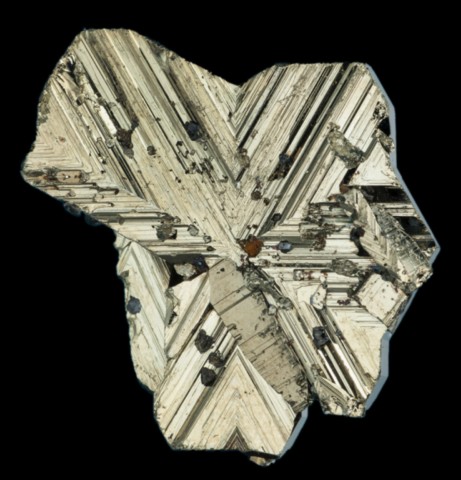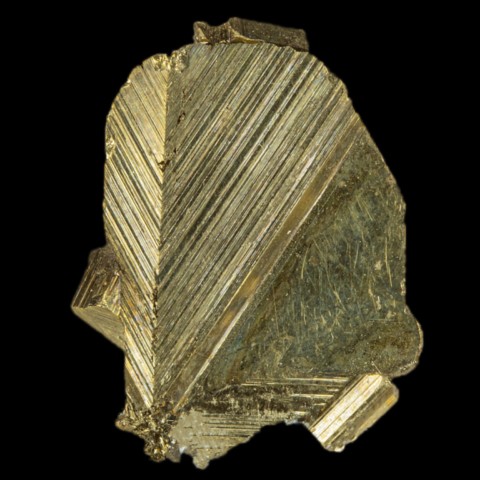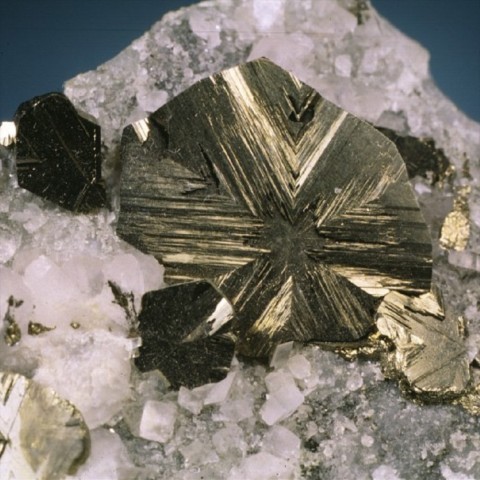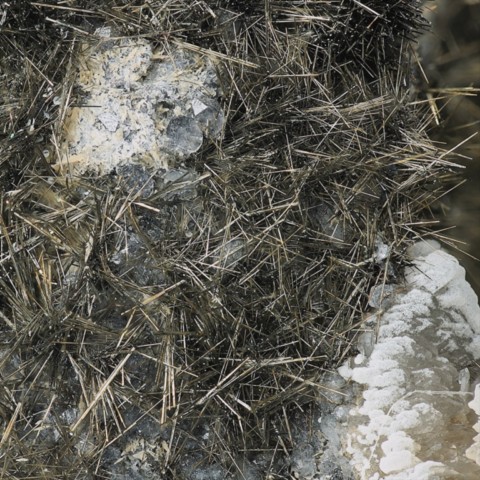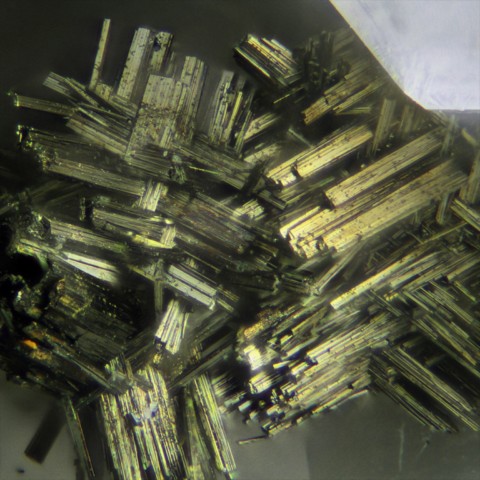 Cubanite - Encyclopedia
Cubanite - Encyclopedia
Class : Sulfides and sulfosalts
Subclass : Sulphides
Crystal system : Orthorhombic
Chemistry : CuFe2S3
Rarity : Uncommon
Cubanite is an iron and copper sulphide which has a predilection for high temperature hydrothermal deposits : pyrrhotite - löllingite - arsenopyrite veins, pyrrhotite skarns and other pyrometasomatic deposits, chalcopyrite - pentlandite magmatic deposits of mafic complexes. His name refers to his country of discovery : Cuba. Cubanite generally occurs in fine oriented lamellae in chalcopyrite : these exsolutions become individualized when the temperature of the hydrothermal fluids drops between 200°C and 210°C; sometimes, it forms millimetric acicular crystals, rarely thick or striated tabular crystals reaching 3 cm and then commonly showing complex twins. The color is bronze to brass yellow. It is a fairly strongly magnetic mineral. It is a very accessory ore of copper.
Main photo : Twinned cubanite from Henderson Mine, Jamésie, Québec, Canada © Tomasz Praszkier
Cubanite in the World
Twinning
A twin is known on {110} forming sets of 2, 4 or 6 crystals.
Fakes and treatments
No fakes listed for this mineral species.
Hardness : 3.5
Density : 4.03 to 4.18
Fracture : Conchoidal
Streak : Gray-black
TP : Opaque
RI : -
Birefringence : -
Optical character : -
Pleochroism : None
Fluorescence : None
Solubility : Nitric acid
Magnetism : Ferromagnetic
Radioactivity : None

